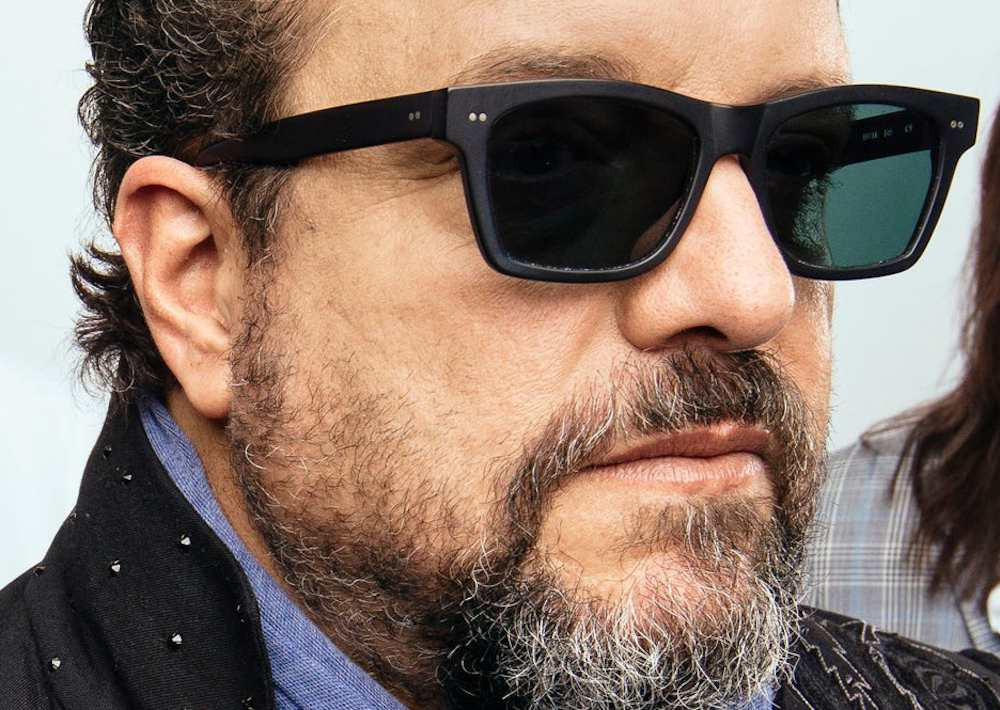 The Mavericks Raul Malo
The Mavericks Raul Malo
The Mavericks, a band celebrated for their vibrant fusion of rock ‘n’ roll, country, and Cuban rhythms, have carved a unique space in the music world. Hailing from the energetic city of Miami, Florida, their music embodies a spirit of celebration and infectious energy. Since their formation in 1989, The Mavericks have released nine studio albums, each showcasing their signature blend of influences and their knack for crafting incredibly catchy songs. Among their impressive catalog, one track stands out as their most iconic and universally loved hit: “Dance The Night Away.” This song has become more than just a track; it’s an anthem synonymous with joy, celebration, and, of course, Dancing The Night away.
Taken from their 1998 album Trampoline, “Dance The Night Away” instantly captivates listeners with its unforgettable horn intro and the feel-good energy it exudes. It’s a song that conjures images of carefree moments, spontaneous dance floors, and pure, unadulterated fun. Raul Malo, the charismatic frontman of The Mavericks, shares the story behind this beloved track, revealing the surprisingly simple origins of what he calls a “happy accident.”
The Genesis of a Hit: Simplicity and a Strum
Raul Malo recounts the initial spark of inspiration for “Dance The Night Away” as a moment of pure musical serendipity. “The first thing I remember is picking up the guitar and just strumming in that very sort of straight way, with the E and the B and the B7,” Malo explains. This simple chord progression immediately resonated with him, sparking the intuitive feeling that a song was beginning to take shape. “I remember immediately thinking, ‘Oh wow, this sounds like a song,’ and it just kind of wrote itself as I messed with it.”
From this basic strumming pattern, Malo began layering in other elements, including the now-iconic horn part. Remarkably, the horn melody, a defining feature of the song, was born from sheer simplicity. “I started adding parts, like the now famous horn part, which is really just the notes of the E chord,” he reveals. He playfully notes the irony of its simplicity, adding, “To the frustration of many a horn player who’s tried to make it all difficult and be all cool and jazzy, it’s just ridiculous in its simplicity! It’s almost a nursery rhyme, so it’s really fun to have horn players suffer a little bit at the hands of a non-horn player.”
The entire songwriting process unfolded with remarkable speed and ease. “I was in my house in my work room, my little studio room, and it was written in an afternoon,” Malo recalls. This experience highlighted the power of simplicity in songwriting and arrangement. “It sounded like something, and it was really an eye-opener as to how simple a song can be.” Malo’s initial demo already contained all the essential components of the final track. “I made a demo of it and, funnily enough, it already had all the parts in it, so when I played it for the band we basically just did the demo.” This experience became a valuable lesson in arrangement for Malo: “It gave me the confidence to really learn how to arrange songs, in that the arrangement is as important as anything else in the song. It can really make or break a song, and I learned that just by working on that little number.”
Escapism and the Lyrical Heart of “Dance The Night Away”
Lyrically, “Dance The Night Away” taps into a universal desire for escape and joyful abandon. Malo describes the lyrical inspiration as stemming from a feeling of needing to break free. “Lyrically, it just sounded like an escape: it sounded like you just needed to get away from whatever you were doing, and that was really the inspiration, a bit of escapism, that’s where it stemmed from.” This theme of escapism perfectly complements the song’s upbeat tempo and infectious rhythm, making it an ideal soundtrack for dancing the night and leaving worries behind. The lyrics invite listeners to embrace the moment, to let loose, and to find release on the dance floor.
From Demo to Dance Floor Staple: An Unexpected Smash
The band’s reaction to “Dance The Night Away” was immediately positive. “When I presented it to the band everybody was like, ‘Oh yeah, we can do this,’ and it was a no-brainer – it was that simple,” Malo states. Despite the song’s clear appeal, the initial reception from their record label was less enthusiastic. “The record company loved it, but as per usual they didn’t know what they were going to do with it, and we thought, ‘Well, we don’t know what we’re going to do with it either… but we know the UK label love it.’”
The Mavericks’ intuition proved correct. The UK label embraced the song, and it quickly gained traction in Europe. “And so they put it out and started working it and it just became a smash all over Europe, and we were proven right.” The song’s success was somewhat unexpected, a testament to its inherent appeal and ability to connect with audiences on a fundamental level. Malo reflects on the elusive nature of hit songs: “If I knew why, or if you knew why, we’d be doing it every day! But the truth is we don’t know why – we might think we know why, we might have an idea, but so many things need to happen in order for a record like that to become a hit and there’s no rhyme or reason to it.” He even admits to feeling that other songs in their catalog might be “better” in a traditional songwriting sense, highlighting the unpredictable magic that can propel a song to global recognition. “I feel like I have a million songs that are 10 times better than that one, just as a song – that one was almost a kind of a throwaway.”
The Lasting Legacy of a “Happy Accident”
“Dance The Night Away” has transcended its initial release to become a cultural touchstone. Its enduring popularity is evident in its presence at countless celebrations, most notably its adoption as a staple at Irish weddings. “…some songs just connect for some reason, and they linger, and then before you know it they’re played at every Irish wedding ever held!” Malo observes with amusement.
While acknowledging that some fans might only know The Mavericks through this one song, Malo maintains a gracious perspective on its impact. “I don’t resent it: certainly there are going to be people who only know us for Dance The Night Away, which is a sad bi-product of that success and sometimes it keeps some people from digging a little deeper. But part of me feels like if you don’t want to dig any deeper than that then you’re missing out, because I think there’s a lot of groovy music that we make.” He recognizes the song’s success as a double-edged sword but ultimately appreciates the opportunities it has afforded the band. “That’s a small price to pay because most of our fans love that song but they love a lot of others things, too.”
Ultimately, Raul Malo views the success of “Dance The Night Away” with gratitude and a touch of wonder. “It’s give and take, and that’s okay: there are certainly worse problems to have and the fact that we had success with that one is a beautiful thing and I would obviously welcome it again. But that’s not something that you shoot for – it’s just something that happens.” The song remains a testament to the unpredictable nature of music and the enduring power of simple, heartfelt songs to capture the collective imagination and inspire people to dance the night away.
EXPERT OPINION by James Linderman
“In every genre there’s already a set of artists that define that genre, so a good strategy might be to try and be the best ‘rock ’n’ roll/country/Cuban’ band in the world, and then define that cross-genre for yourself. It fills an empty seat.”

